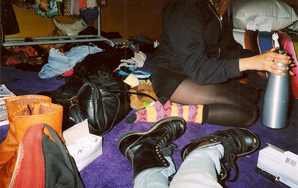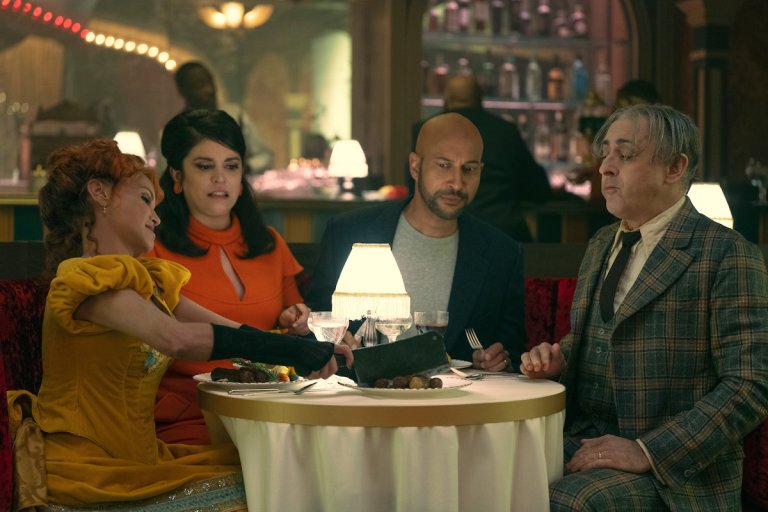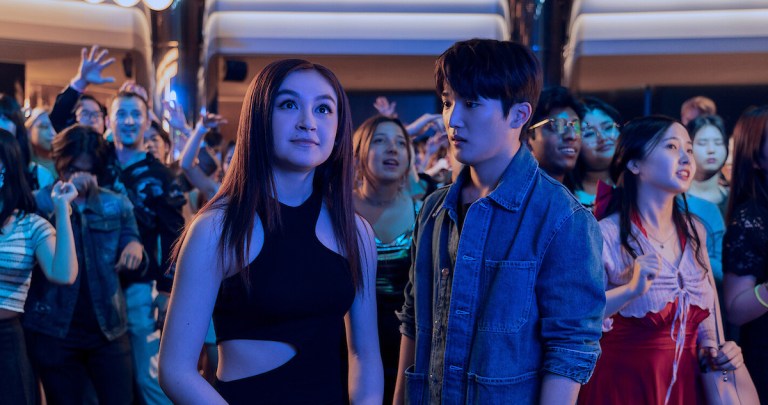How To Buy Clothes
The problem with clothes is their impermanence, their slow deterioration from snazzy garments into rags fit only for nuclear holocaust survivors, requiring replacement clothes, ever more replacement clothes.
By Brad Pike


The problem with clothes is their impermanence, their slow deterioration from snazzy garments into rags fit only for nuclear holocaust survivors, requiring replacement clothes, ever more replacement clothes. The burden of configuring your real-life avatar to convey a specific aesthetic message day by day is heavy and terrible. See, once you buy into the whole ‘I need to wear clothes’ paradigm foisted on you by the fashion industry, you have to purchase clothes on a semi-regular basis (once every two or three years, I think), venturing into settings full of blaring pop music, leering handsomes, and mannequins cavorting grotesquely in cardigans. Some stranger approaches: “Do you know what you’re looking for, sir?” “I DON’T KNOW ANYTHING ABOUT ANYTHING AT ANYTIME EVER OH GOD.”
Your fashion decisions are constrained by factors like size, color, pattern, and price, but how to judge what is appropriate? You think you know your size, but do you really, truly know for certain? Last year, my family gave me an extra-large polo shirt even though I am a shriveled husk who’s never worn a polo shirt and not a giant republican. This year, they gave me a medium size polo shirt (I am still a small), but told me they didn’t make a mistake, that I’ve been wearing the wrong size my whole life, and I should be wearing a medium, and — heavens, child! — why do you always insist on wearing tiny shirts? Have I really been inadvertently wearing tiny shirts my whole life? Why would I do that? Has every person I’ve ever met looked at me and thought, “Look at this shriveled husk in his tiny, tiny shirt. It would be better if he wore a larger shirt. It would be better if I didn’t have to look at him. It would be better if he was dead,’ without me perceiving a trace of disdain? Oh no.
So this is why you bring along a companion, someone trustworthy to help you navigate the clothing store’s visual cacophony and provide a second opinion. Personally, I bring my mom. My mom’s cool. Your mom’s probably pretty cool too, so if you don’t have any trustworthy friends available, utilize that mom for fashion consultation. You’ll hold up a shirt with, say, the Punisher logo on the front, and she’ll say, “Do you think that encapsulates your individual essence, dear? A skull?” And you’ll say, “It’s the Punisher. He seeks vigilante justice after his family’s murdered. Um, he’s a Vietnam war veteran?” And she’ll say, “I feel like your personality is completely antithetical to what that man represents. Hey, what about this shirt with the monkey holding a boom box. It’s so cute.” You’ll look at the cute monkey shirt and know she’s right, has always been right, and what were you thinking, you dumb idiot. Buy the monkey shirt.
The goal of clothes is to communicate class, culture, and personality to other people (also to cover the gross parts). If you wear bad clothes, you’re probably a bad person, or at least, a less valuable person to society. If you wear bad clothes, people see you on the street, and they say, “There’s a person who, were he to die, I would feel nothing. Nothing.” If a person looks at your shirt and finds it incompatible with his/her sense of style/class/etc., your viability as a candidate for friendship or romance is dismissed, for as we’ve learned from magazines, fashion is an integral component of one’s humanity, like a soul or a capacity for empathy. For example, I remember middle school, when I wore a different colored Hawaiian shirt every day of the week because A) I liked looking like I fell in the paint pool from Hook, B) it provided a routine I could cling to, and C) my undeveloped adolescent brain. The level of isolation and misanthropy was unprecedented. Like leprosy. People saw a child covered in tropical flowers, and they knew — rightfully so — it was symptomatic of a diseased psyche, meriting strict avoidance. I spontaneously cried in class and drew pictures of dead people.
As far as I can tell, there are all sorts of insidious rules about clothes shopping, particularly for the young folk, because while you want to look cool, you don’t want to look like you want to look cool because that’s not cool. For example, you can’t shop at Urban Outfitters because it’s a store for hipsters, and hipsters are horrible people for reasons explicated in countless Gawker articles, obviously. At the same time, you can’t shop at The Gap because it’s too mainstream and uncool. You can’t shop at Wal Mart because that’s for poor people, and poor people aren’t cool. You can’t shop at good will or thrift stores because that’s also hipster, and aren’t you sooooo anti-capitalist by buying secondhand clothing, you hippie douchebag. I think it’s okay to shop at Target, though, so only shop there, I guess. Better yet, don’t buy clothes; just wear your dad’s clothes. Ask your mom which of your dad’s clothes you should wear, and she’ll know, has probably wondered what you’d look like in his clothes for years.
Put on your dad’s clothes, and examine your new self in the mirror, feeling mature and professional, like a person who owns a mattress as well as a bedframe; who thinks, like, ‘Hmm, credit score, mortgage, cover letter, lease, fiscal report, logistics, property values, yes, all of that bidness.’ Who needs the mall when you have a dad with plenty of clothes? Don’t tell him you took his clothes, though, because he wouldn’t understand; just avoid the inevitable patriarchal oppression altogether. One day, we’ll each wear a skin tight black suit made of a billion nanobots that molds itself via neural link into whatever bodily coverings we imagine, and that will be the last outfit you ever wear. But until that blessed day, I’ll wear my dad’s pale blue turtleneck because my mom says it looks cute. She’s pretty cool. ![]()




